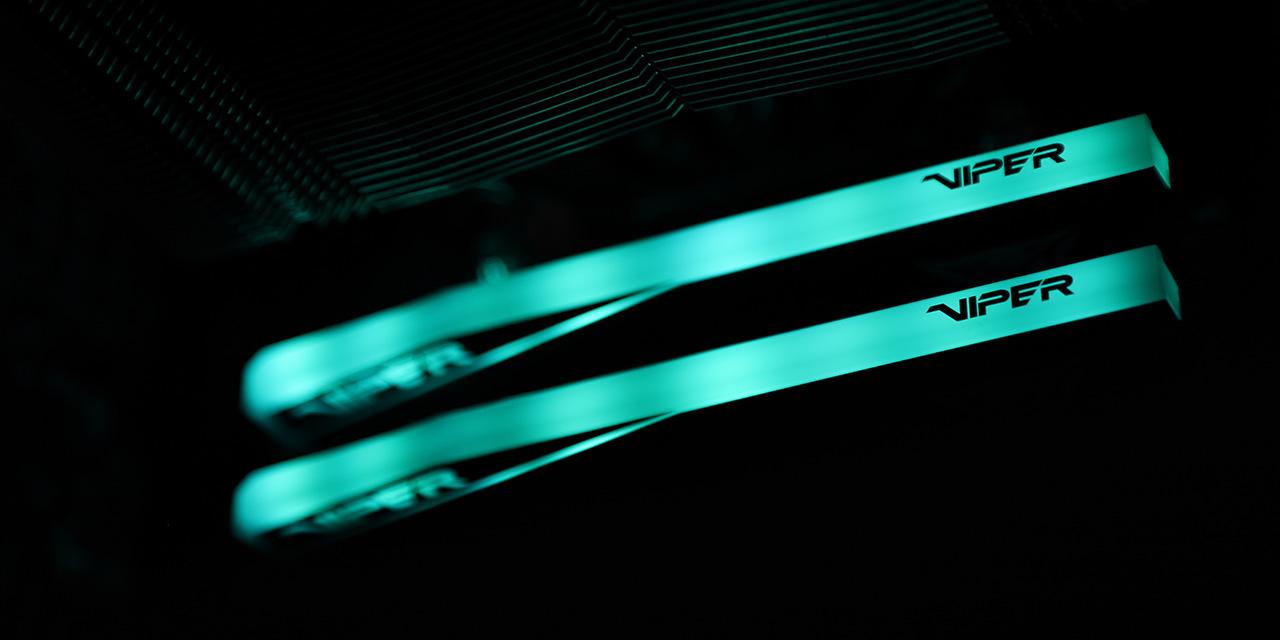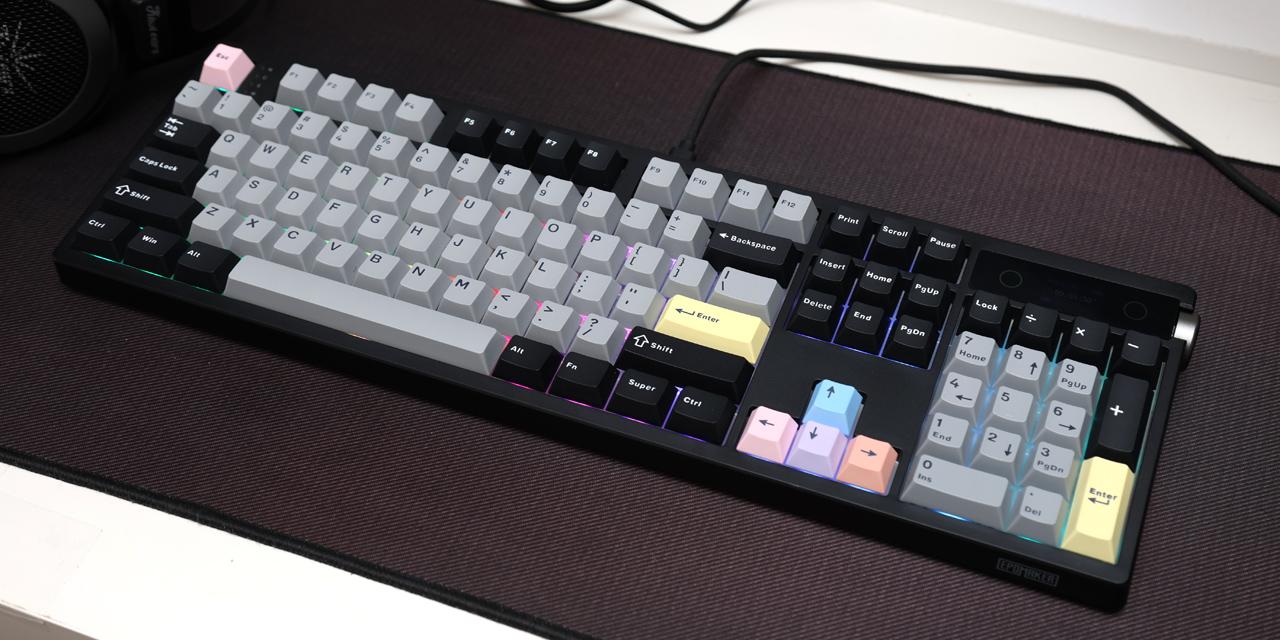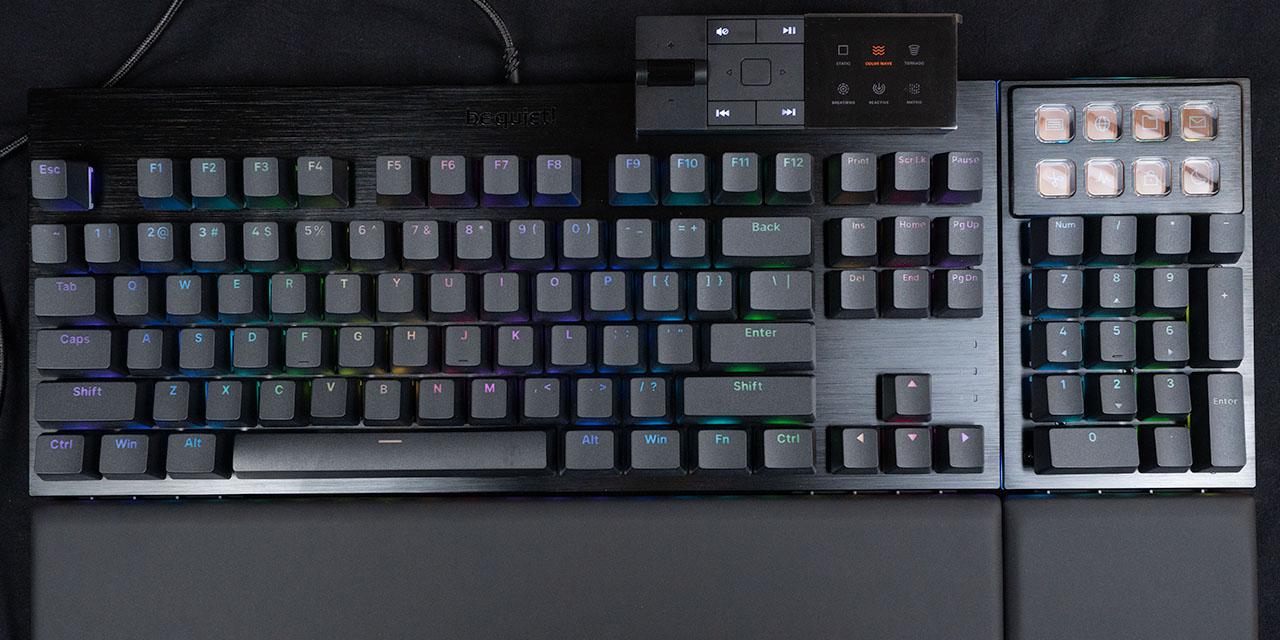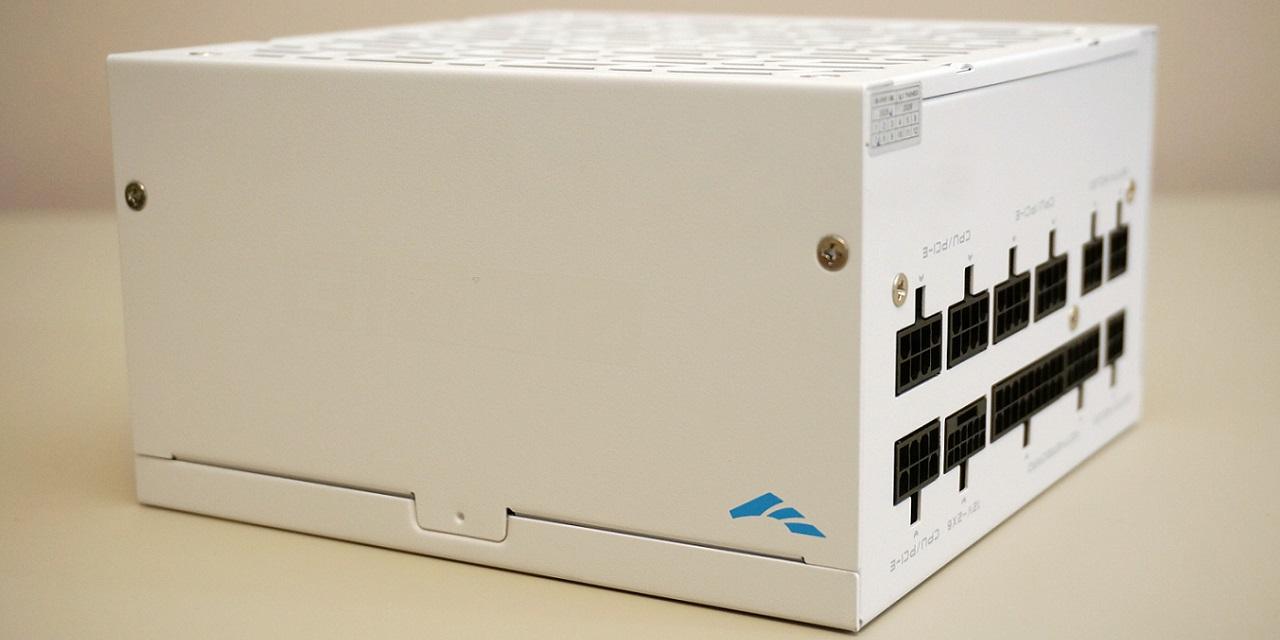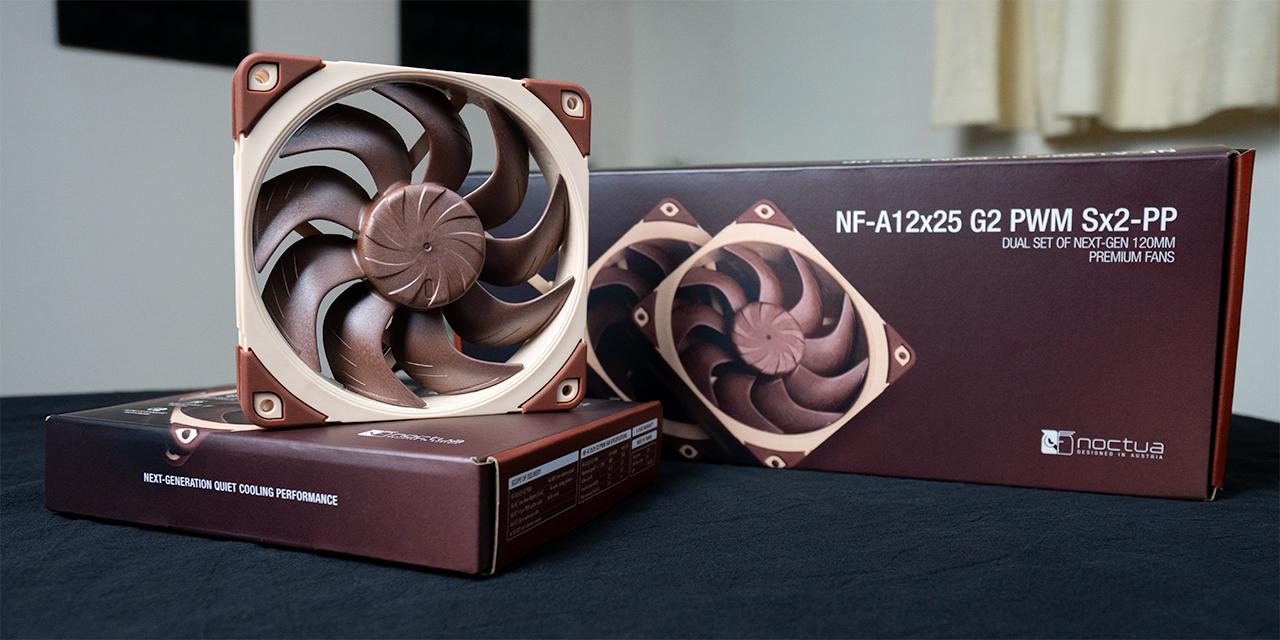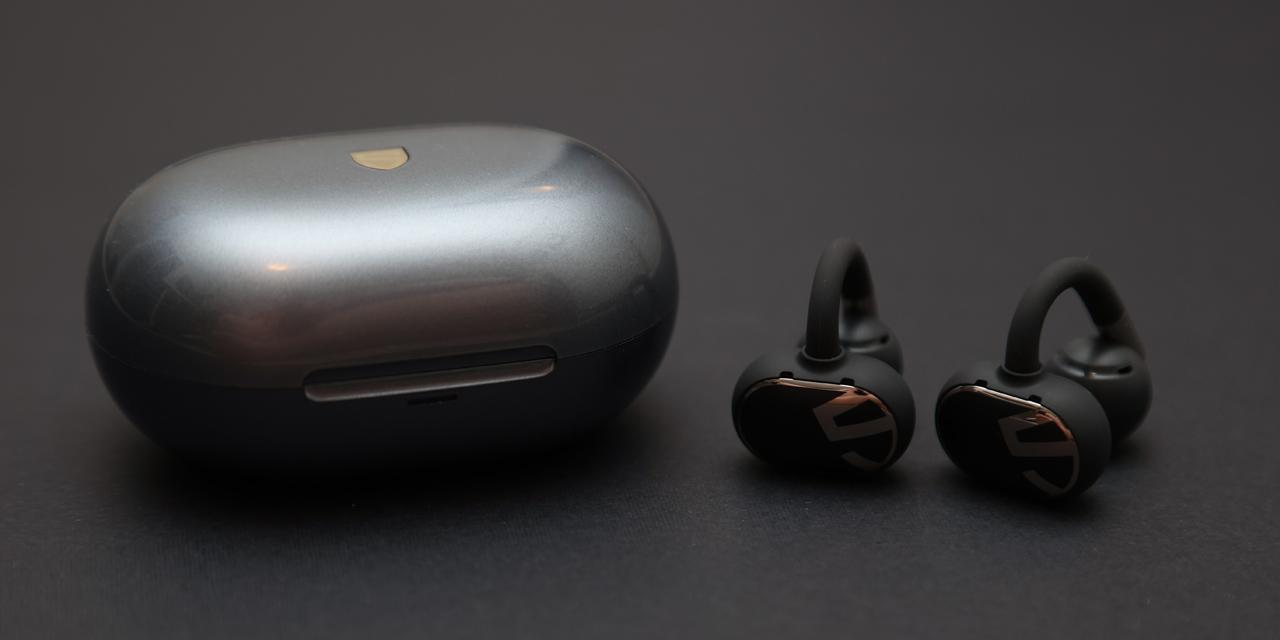Page 2 - A Closer Look - Hardware and Software

The Epomaker CIDOO C75 is a standard 75% keyboard when it comes to appearance. It is important to note this keyboard comes in two different variations, Silver or Black. These two options are great as standard colors, as either can be a good base for customization. Our particular model is the Silver model. Epomaker opted to use a aluminum case with dye-sub PBT keycaps, which has a consistent appearance across the board. The keycap design fits well with the case, but I would have appreciated having extra keycaps to replace the Mac modifiers and orange Escape key. The CIDOO C75 features a standard high-bezel design, keeping the keycaps almost level with the frame of the keyboard. Epomaker chose not to place any branding on this keyboard, and I appreciate this minimal branding. The knob is very smooth to use and operates the volume as you may expect. For those unfamiliar with knobs on keyboards, manufacturers commonly use them as a volume dial. The CIDOO C75 does not come with a wrist rest or adjustable feet, so you will have to adapt to the typing angle. I found no issue with typing on this keyboard, but your experience may vary.
The Epomaker CIDOO C75 measures in at 329mm length, 146mm width, and 43mm height. Given the design, this is quite standard for a 75% design. The size makes sense given the layout. In terms of mass, this weighs in at 1946g, not including the detachable cord. This might seem quite heavy for a 75% keyboard, but when considering this is a fully aluminum keyboard, everything makes sense. Going into the build quality, the top deck shows little flex when pushing between the small gaps of the keyboard as you may expect from a metal build. When pushing into the keys, there is surprisingly no flex in this “gasket” keyboard. This is due to the structure, but we will expand on that more on the next page. I did not have to try to bend the keyboard, as there was no possible way for me to bend this case with my bare hands. I was quite satisfied with the build quality, as aluminum is something I have become accustomed to.

The Epomaker CIDOO C75 comes in a 75% QWERTY ANSI layout. The standard 75% layout typically has eighty-two to eighty-four keys, depending on whether or not we are using an exploded design or not. An exploded design means that sections of the keyboard will be sectioned out, having bezels between each section that make for a less cluttered appearance. The CIDOO C75 has eighty-one keys instead, as there is an included knob. The ANSI layout is the standard American layout, which uses a single row Enter key, as seen in some of the earlier images. The keyboard does use a standard bottom row. For those who do not know, 1U stands for a single unit, meaning a 1.25U keycap is 1.25 times wider than a regular one. The left bottom row keys are 1.25U, but everything to the right of the space bar is 1U. For the average user, the typing experience will feel relatively the same, but they should be aware of the smaller right Shift and modifier keys.
The Epomaker CIDOO C75 has full N-key rollover, meaning every single key pressed will register even if they are all pressed simultaneously. This means there will be no ghosting issues, where some keys may not be registered. Gamers and fast typists who have fast actions per minute or words per minute will benefit from this, as it will allow more keys to be recognized at the same time. In reality, people usually only need 6-key rollover, so the addition of N-key rollover is nice for extremely fast typists who can reach about 250 words per minute. The inclusion of N-key rollover has become quite standard among keyboards, so this should not come as a surprise the CIDOO C75 has it as well.

Taking a look at the secondary functions on the F row, arrow, and a few extra keys, the user will have some memorizing to do. None of the secondary functions are labeled on the keycaps, thus the manual will be of use. These can be accessed by holding down the Fn key on the bottom right side before pressing the indicated key. We will break this down into shortcuts, lighting effects, and other function key combinations.
First, we will talk about the shortcut and multimedia keys. The A key will swap to Windows mode, while S swaps to Mac. F1 will open the Music Player. F2 and F3 control Volume Down and Up, respectively. F4 will toggle the system's mute. F5 to F8 control Previous, Play/Pause, Next, and Stop/Play, in respective order. F9 to F12 take care of launching your default applications or operating system functions like Email, Web, Calculator, and Search. Delete will become the Insert key when used in combination with Fn, while Home will act as End. As with many gaming keyboards, Windows lock can be toggled using Fn and the Windows key.
For lighting effects, we have the arrow keys. Up and down arrows increase and decrease brightness, while left arrows controls the backlight direction and right changes the color. Backslash will toggle the lighting effects. Minus and plus keys will control backlight speed. Backspace will toggle the LEDs on and off. Page Up will toggle the light strip LED mode, and Page Down will toggle light strip LED color. If you hold Fn and the space bar for 3 seconds, it will reset the keyboard to factory settings. This is actually a nice feature for troubleshooting. Personally, I prefer to keep lighting off, as these are not shine-through keycaps, and having the lights off will save on battery life.

As for the keycaps, these are made out of PBT plastic or polybutylene terephthalate, as previously mentioned. I personally prefer PBT, as the material is harder and resists shining better. The lettering is printed out on the top of the keycap using a dye sublimation process, which is created by utilizing heat and pressure to transfer the legending onto the keycap. This method is also known as dye-sub, and it is typically a cheaper method of making keycaps. Dye-sub is the same or slightly worse quality of printing compared to doubleshot, but in our case with the CIDOO C75, it is really quite good. The coloration and legending are sharp. Despite what some may say on the internet, these processes do no affect warping or shine, as those properties are mostly to do with the material of the keycaps. PBT is quite good in both of these aspects. Underneath the keycaps, you can see the typical MX stem. This means you can replace the keycaps with another set. This keyboard uses south-facing lights, which is good, as there will be no interference problems using Cherry profile keycaps. In regard to thickness, they are about 1.5mm thick, which is really good. The significance of the thickness of a keycap is important for the feel and pitch. To keep things simple, thicker ones have more depth and produce a deeper thock, while thinner ones produce a higher pitch sound.
The Epomaker CIDOO C75 features the Gateron KS-20U Magnetic Hall Sensor Swtiches, or KS-20U for short. These switches are linear by nature, having a smooth travel from beginning to end. We have seen these switches in the Turtle Beach Vulcan II TKL Pro. The KS-20U switches have a key travel of 4.1mm. This is a slight alteration to the standard travel specifications for many mechanical switches opting for a slightly longer total travel. The total force required to actuate is roughly 30g for operating. These switches have a rated lifespan of 100 million clicks, which is incredibly long. The CIDOO C75 is also hot-swappable, meaning you can swap these at any time if they begin to fail. Something important to note is that this is a Hall effect keyboard, meaning it uses Hall sensor switches and cannot be swapped to use a typical mechanical switch. The design of the switch is slightly altered, and I will expand on this on the next page.
Even with these specifications, it is quite hard to picture what these switches actually feel like, so I will try my best to explain. For a stock switch, the Gateron KS-20U switches are more than acceptable. The linear characteristic gives a very smooth travel. If you have used a standard mechanical keyboard before, it will feel quite normal. With that said, the KS-20U switches are good and offer a good value.
Moving on to stabilizers, we have plate-mount Cherry stabilizers. If you are unfamiliar, there are two main designs of stabilizers, which are Cherry and Costar. In both cases, these are used to maintain balance in the longer keys and stabilize them, as the name implies. Cherry ones will have stems matching the bottom of most keycaps, while Costar has a wire hooked into a hoop on the keycaps. The main issue with Costar stabilizers is how they are a rattly mess, and there is practically nothing you can do about it. Cherry stabilizers also rattle, but there are ways to reduce the sound, making it the superior choice.
There is also a large difference between plate mount and PCB mount stabilizers. Generally, there are three types of mounting method, including plate mounting, screw-in, and clip-in. The latter two are PCB-mounted. I personally prefer screw-in stabilizers, as they stay in place the best out of the three options, followed by clip-in. Given the keyboard’s design, plate mount stabilizers make a lot of sense, as they are the easiest to maintain and remove. The ease has a caveat that they can also easily fall out. With a small bit of knowledge, anyone should be able to fit them back into place rather easily. With that being said, the included stabilizers are tuned quite well with no apparent rattle.

Taking a peek at the bottom of the keyboard, we have four rubber feet. The feet on the bottom side are average in size, doing a great job of keeping the keyboard in place. There should be no noticeable unintentional sliding. As mentioned previously, there are no kickflip feet at the bottom to raise the back, but I was personally fine with the angle. There is no cable raceway to manage cables, as the Epomaker CIDOO C75 uses a detachable cable design. This is my personal preference, as it makes swapping between keyboards easier. The included 1.8m USB Type-C cable is greatly appreciated. This cable is really quite nice, being braided. The quality is nice, and a standard cable will work well for the CIDOO C75.

After doing my thorough inspection, I put the Epomaker CIDOO C75 to use. As these Gateron KS-20U switches are linear in nature, I made sure to account for this in the typing test. My first observation was a nice and deep bottoming out sound with no ping. I should note I am typing on top of a desk mat, which dampens higher pitched sounds. However, the lack of pinging is more due to the dampening within the keyboard. Epomaker has provided a good amount of foam to prevent unwanted noise. The smooth linear feel was consistent throughout all the keys, which was nice. As someone who generally enjoys linear switches, I had a great experience, as these switches do not need to deal with the typical leaves in regular switches and are pre-lubricated. Something great about Hall effect switches is their ability to be customized when it comes to the actuation point. The travel distance was good, and I had no issues whatsoever. A sound test of the Epomaker CIDOO C75 can be found above.

The Epomaker CIDOO C75 definitely has good lighting effect potential. The lighting effects can be seen around the keycaps and on the light strip, as these keycaps do not shine through. Despite this fact, the backlighting effects are still nice to have. I personally found the lighting to be acceptable, as I had no issue with configuring it using software. If you really want the legends to be illuminated, you can swap the keycaps out, as we have standard MX stems. Fifteen different lighting variations can be toggled through by using the software I will talk about in a moment.

In terms of software, we have CIDOO Driver. While this is not VIA, this software is still quite impressive, as it is feature rich in all the aspects you would want for the Epomaker CIDOO C75. I really appreciate having software for the CIDOO C75, as I personally found the hardware key combinations to be confusing. From left to right, we have Key Custom, Trigger Setting, Senior Key, Light Setting, Performance, and Macro. Key Custom is where you will be able to remap any of your keys to anything you want.
Trigger Setting is arguably the most important feature of this keyboard, as it allows you to customize the actuation point of the switch, polling rate, quick trigger settings, and re-calibrate. Speaking towards actuation point, most mechanical switches have an actuation point of 2mm, which is the default setting in CIDOO Driver. If you want to shorten this point to make the switch more sensitive or make it longer to be less sensitive, you can. This level of customization is part of why Hall effect keyboards are beginning to be more sought after for gamers.
Changing polling rate will affect how much data is sent to your system from the keyboard. I personally do not see a reason to change this, as you normally want it to be the highest rate possible. In this case, the 8000Hz polling rate is absolutely astonishing. This is on par with the most popular Hall effect keyboard, the Wooting 60HE or 80HE. Furthermore, we have Quick Trigger, which is commonly known as Rapid Trigger. In short, this feature allows you to input quicker commands and have more immediate keystrokes. The way it works is that rather than acting in a binary nature like regular switches, Hall effect switches can sense the movement of the stem. This means the keyboard will know exactly when the stem is going up and down. With this information, the switch can activate immediately upon receiving pressure and deactivate as soon as it recognizes it is being released. The application of this feature would best apply to strafing to FPS games that include shooting error from movement, as your movement will feel more immediate.
Senior Keys is another interesting aspect of the potential of Hall effect keyboards. To explain briefly, this setting will allow you to map multiple functions onto a single key. The CIDOO C75 has three methods in which it can do this, being Dynamic Keystrokes, Mod-Tap, and Toggle Key. These methods are abbreviated to DKS, MT, and TGL. DKS allows you to perform up to four actions based on the depth of the keypress. I personally do not use this function well due to what some call a “skill issue”, where I find this usage to be very precise. MT is a little easier to use, as you can assign two functions to a single key depending on the duration of the press. To put simply, a quick tap can perform one function, while holding down the key can activate another function. I could see people using this in tactical shooters like Valorant, where you can assign holding down 4 to stick the plant or defuse so that you can better position your hand while still performing either action. Finally, we have TGL. This option functions similar to MT, but is more specified to toggle between rapidly repeating keystrokes by quickly tapping and holding down the key. I personally feel this option is quite niche to Quake players, but it is great to see.
Moving on, we have Light Setting. As you might expect, you have access to adjust the keyboard LEDs to whatever you like. There are fifteen base presets that you can modify, or you can customize it entirely. This is honestly one of the cleanest lighting menus I have seen, as it is not overly complicated. Next, we have the Performance menu that allows you to adjust what Windows Lock will turn off. If you have ever been tricked into using Alt + F4 in a game, this is definitely a setting you should use. Finally, we have the macro tab, where you can record and edit macros as you please.
On a quick note, there have been instances where players have been banned from using features on Hall effect keyboards. Be aware when playing games as it could be considered as cheating, depending on the game you are playing. If you are using this for competitive esports, you should check their rules and regulations.
Page Index
1. Introduction, Packaging, Specifications
2. A Closer Look - Hardware and Software
3. A Closer Look - Disassembly and Internals
4. Conclusion
